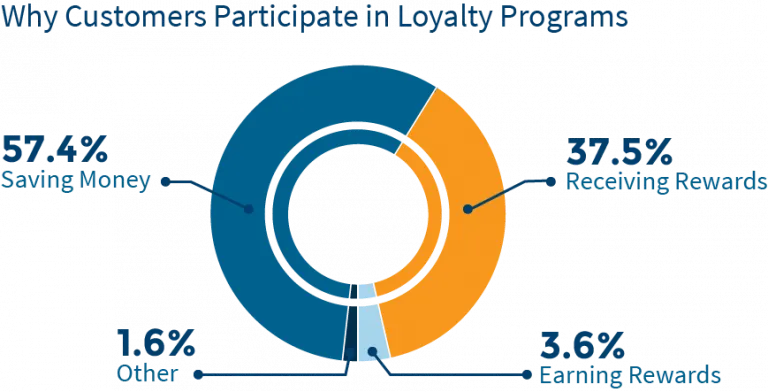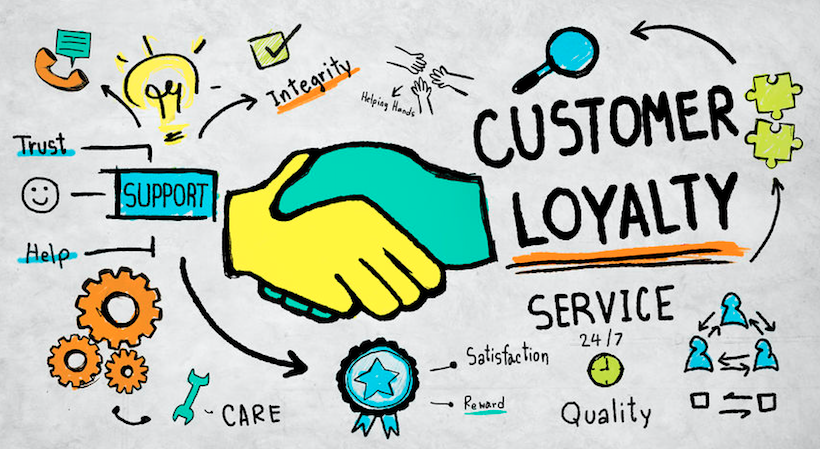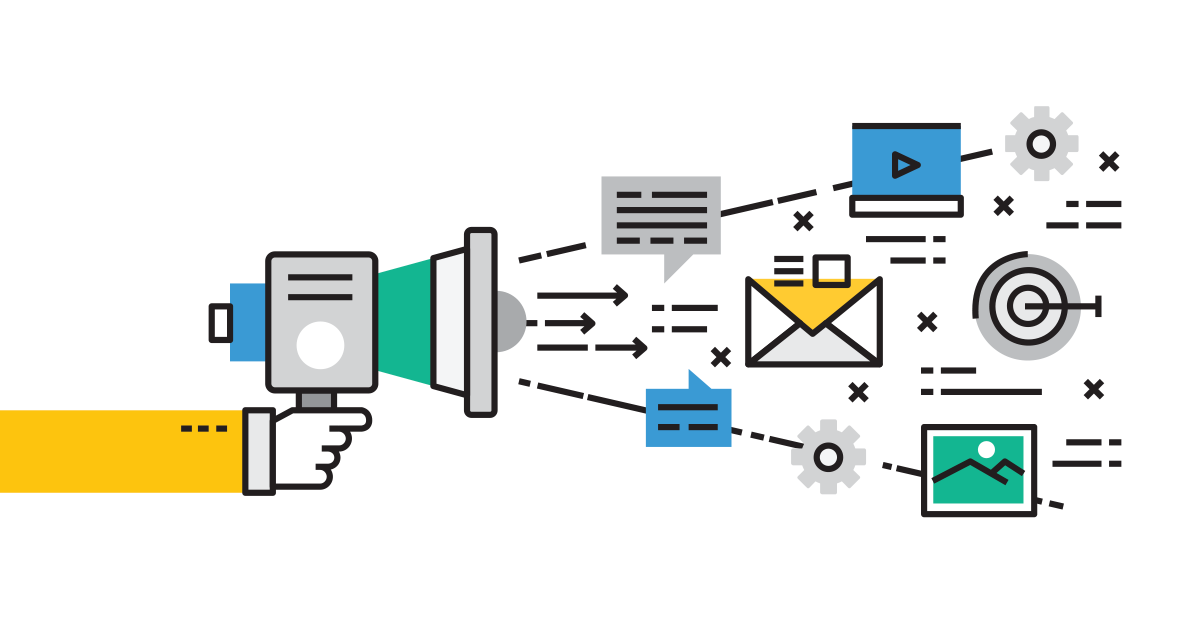All Categories
Featured
Table of Contents
In Newington, CT, Quinn Hamilton and Emanuel Melendez Learned About Customer Loyalty

What if you could grow your service without increasing your costs? In fact, what if you could actually reduce your spending but increase your sales, year after year? Would you do it? If you're a company owner, then you'll likely give a definite 'yes', an easy response to an even simpler concern.
A rewards program tracks and benefits certain spending behavior by the customer, offering unique benefits to devoted customers who continue to go shopping with a certain brand. The more that the customer spends in the store, the more benefits they get. With time, this reward develops faithful consumers out of an existing client base.

Even if you already have a reward program in location, it's a great concept to dig in and totally understand what makes consumer loyalty programs work, along with how to implement one that costs you little money and time. Don't fret, I'll assist you with that. I'll break down the primary advantages of a loyalty program and the best methods to create faithful customers.
Let's dig in. Client loyalty is when a customer returns to do organization with your brand over your competitors and is mostly affected by the favorable experiences that the customer has with your brand. The more positive the experience, the most likely they will return to patronize you. Consumer commitment is exceptionally important to organizations because it will help you grow your business and sales faster than an easy marketing strategy that focuses on recruiting brand-new customers alone.
A couple of methods to measure client commitment include:. NPS tools either send a brand performance study via e-mail or ask clients for feedback while they are going to a company's site. This details can then be used to better understand the possibility of client commitment. A repurchase ratio measures the ratio of repeat purchasers versus one-time purchasers.
Consumer commitment index (CLI). The CLI tracks consumer commitment over time and resembles an NPS survey. However, it takes into account a couple of additional aspects on top of NPS like upselling and repurchasing. These metrics are then used to assess brand commitment. A customer loyalty program is a marketing strategy that rewards customers who make purchases and engage with the brand name on a continued basis.
Customer benefits programs are created to incentivize future purchases. This encourages them to continue doing service with your brand. Consumer loyalty programs can be set up in numerous various methods. A popular customer commitment program rewards consumers through a points system, which can then be invested on future purchases. Another type of client commitment program may reward them with member-exclusive advantages or free presents, or it may even reward them by donating money to a charity that you and your clients are mutually passionate about.
In 90260, Damian Burch and Elianna Martin Learned About Customer Loyalty
By offering rewards to your customers for being loyal and encouraging, you'll develop a connection with them, deepening their relationship with your brand name and ideally making it less likely for them to switch to a competitor. You have actually most likely seen client loyalty programs in your own shopping experience, whether at your preferred coffee shops or your most frequented supermarket.
But even if everyone is doing it does not imply that's an excellent enough factor for you to do it too. The better you understand the advantages of a consumer rewards program, the more clarity you will have as you produce one for your own shop. You will not be sidetracked by interesting benefits and complex commitment points systems.
Remember: work smarter, not harder. Consumer retention is the primary advantage of a benefits program that functions as a foundation to all of the other benefits. As you provide incentives for your existing client base to continue to buy from your store, you will provide your store with a constant circulation of money month after month.
By growing your retention rate, you can stop spending as much time or money on increasing your general number of consumers. Why is this crucial? Devoted customers have a greater conversion rate than new consumers, indicating they are most likely to make a transaction when they visit your shop than a brand-new client.
By increasing your retention rate by just 5 percent, you can increase your earnings by 25 percent and as much as by 95 percent. Needless to state, your retention rate matters. Key Takeaway: If you want to significantly increase your profits, offer rewards for your existing clients to continue to patronize your shop.
And you will not need to invest cash on marketing to get them there. Customer acquisition (aka generating brand-new clients) takes a great deal of effort and money to encourage total strangers to trust your brand name, come to your store, and attempt your products. In the end, any cash earned by this brand-new customer is overshadowed by all of the cash invested on getting them there.
Key Takeaway: If you want to lower spending, focus on consumer retention rather of customer acquisition. When you focus on offering a positive tailored experience for your existing clients, they will naturally inform their buddies and family about your brand name. And with each subsequent transaction, loyal customers will tell a lot more people per transaction.
In Hobart, IN, Sanai Gates and Dominick Castillo Learned About Positive Reviews
The very best part? Because these new customers originated from trusted sources, they are more most likely to develop into loyal clients themselves, spending more usually than new clients brought in by other marketing efforts. The Chase Ultimate Benefits program, for instance, provides significant benefits for individuals who take a trip a lot.
The 'ultimate rewards' that Chase cardholders get consist of 2x points per dollar invested in all travel purchases along with primary rental vehicle insurance, no foreign deal costs, journey cancellation insurance coverage, and purchase protection. For people who take a trip a lotand have non reusable earnings to do sothere is a massive incentive to spend money through the supreme benefits program.
This entire process makes redeeming rewards something worth bragging about, which is exactly what lots of cardholders wind up doing. And to assist them do it, Chase provides a bonus for that too. Secret Takeaway: Make it easy for your customers to extol you and they will get the word out about your purchase free.
As soon as you get the fundamentals down, then using a commitment rewards app can help take care of the technical information. Here are the steps to start with creating your client loyalty program. No consumer desires to buy items they do not desire or require. The exact same goes for your commitment program.
And the only way to tailor an irresistible customer commitment program is by totally knowing your customer base. The best method to do this? By executing these strategies: Develop customer contact details anywhere possible. Ensure your service is constantly constructing an in-depth contact list that enables you to gain access to existing clients as often and as easily as possible.

Track client habits. Know what your consumers desire and when they want it. In doing so, you can expect their desires and needs and provide them with a commitment program that will please them. Categorize customer individual characteristics and preferences. Take a multi-faceted approach, don't limit your commitment program to simply one opportunity of success.
Motivate social networks engagement. Frame methods to engage with your clients and target market on social networks. They will quickly supply you with very informative feedback on your items and services, permitting you to much better understand what they anticipate from your brand. As soon as you have actually exercised who your clients are and why they are working with your brand, it's time to choose which kind of commitment benefits program will motivate them to stay devoted to you.
In 7712, Hannah Stafford and Wyatt Knapp Learned About Influential People
However, the most typical client commitment programs centralize around these primary concepts: The points program. This type of program focuses on gratifying clients for each purchase they make with points in a point system. These points can then either be utilized on future purchases or put towards some type of reward.
The paid program. This type of program needs clients to pay a one-time or annual cost to join your VIP list. Loyalty members who belong to this list are able to access distinct benefits or member-exclusive advantages. The charity program. This type of program is a bit different than the others.
This is achieved by encouraging them to do organization with the brand name and, in return, their commitment will be rewarded with a contribution to a charity. The tier program. This kind of program focuses on increasing levels of brand commitment. The more devoted a customer is to a brand name, the greater tier they will climb up to and the better the rewards they will get.
This type of program is simply as it sounds, where one brand partners with another brand name to offer their collective audiences with special member discounts or offers that they can redeem while doing organization with either brand. The neighborhood program. This type of program incentivizes brand name loyalty by offering its members with access to a like-minded community of people.
This type of program is relatively comparable to paid programs, however, the membership cost happens on a regular basis rather than a one-time payment. Next, choose which client interactions you wish to reward. Base these benefits around which interactions benefit your business one of the most. For instance, to assist your company out, you can offer action-based benefits like these: Reward customers more when working with your brand name during a sluggish duration of the year or on an infamously slow day of service.
Reward customers for engaging with your brand name on social media. Incentivize certain items you are trying to move rapidly. Incentivize purchases that are over a certain dollar amount. The concept is to make your client commitment program as simple as possible for your customers to utilize. If your customer loyalty program isn't staff friendly, isn't easy to track, is too pricey to run, or isn't easy for your clients to utilize or comprehend, then personnel and consumers alike most likely will not benefit from it.
To get rid of these barriers to entry, think about incorporating a client loyalty software application that will help you keep on top of all of these aspects of your program. Some quality client program software consist of:. CandyBar is a digital punch card program. It works by tracking your client's purchases through an app on a computer system, phone, or tablet.
In Richardson, TX, Trevon Gill and Kaylen Hunt Learned About Effective Marketing Tips
Loyalty members can then inspect their rewards through text message and business owners can utilize the program to contact their customers. Yotpo. Yotpo is a cloud-based consumer loyalty platform specifically for eCommerce services. This software application is especially proficient at gathering every type of user-generated content, useful for tailoring a better customer experience.
Loopy Loyalty is an useful client commitment software application for companies that primarily utilize Google Wallet or Apple Pay as their payment platforms. The software application creates a digital loyalty card that sends out push alerts to their customers' phones when they remain in close proximity to their physical store. When you have actually made the effort to decide which consumer loyalty strategies you are going to carry out, it's time to begin promoting and registering your first loyalty members.
Usage in-store advertisements, integrate call-to-actions on your site, send promos via email newsletters, or upload promotional posts on social media to get your clients to sign up with. It is very important to understand the main benefits of a consumer rewards program so that you can develop an individualized experience for both you and your client.
Consider it. You understand what sort of products your consumers like to purchase but do you know what brings them back, day after day, week after week? What makes them pick your store over the store throughout the street? What makes them your customer and not the client of your most significant competitor? Remarkably, the responses to these concerns do not boil down to discount rates or quality products.
Table of Contents
Latest Posts
Awwwards - Website Awards - Best Web Design Trends Tips and Tricks:
Web Design Vs. Web Development - Upwork Tips and Tricks:
Learning Web Design: A Beginner's Guide To Html, Css ... Tips and Tricks:
More
Latest Posts
Awwwards - Website Awards - Best Web Design Trends Tips and Tricks:
Web Design Vs. Web Development - Upwork Tips and Tricks:
Learning Web Design: A Beginner's Guide To Html, Css ... Tips and Tricks: